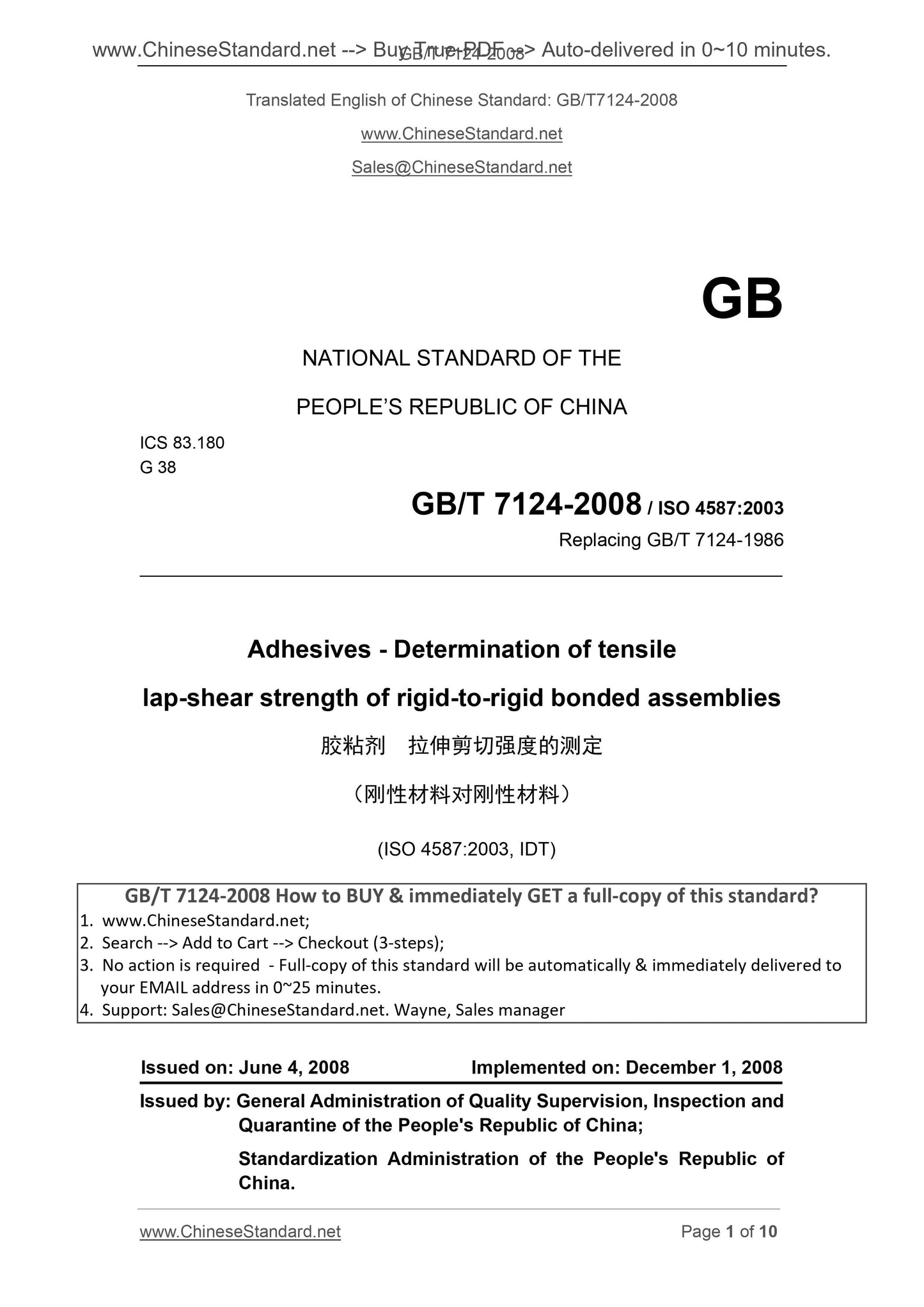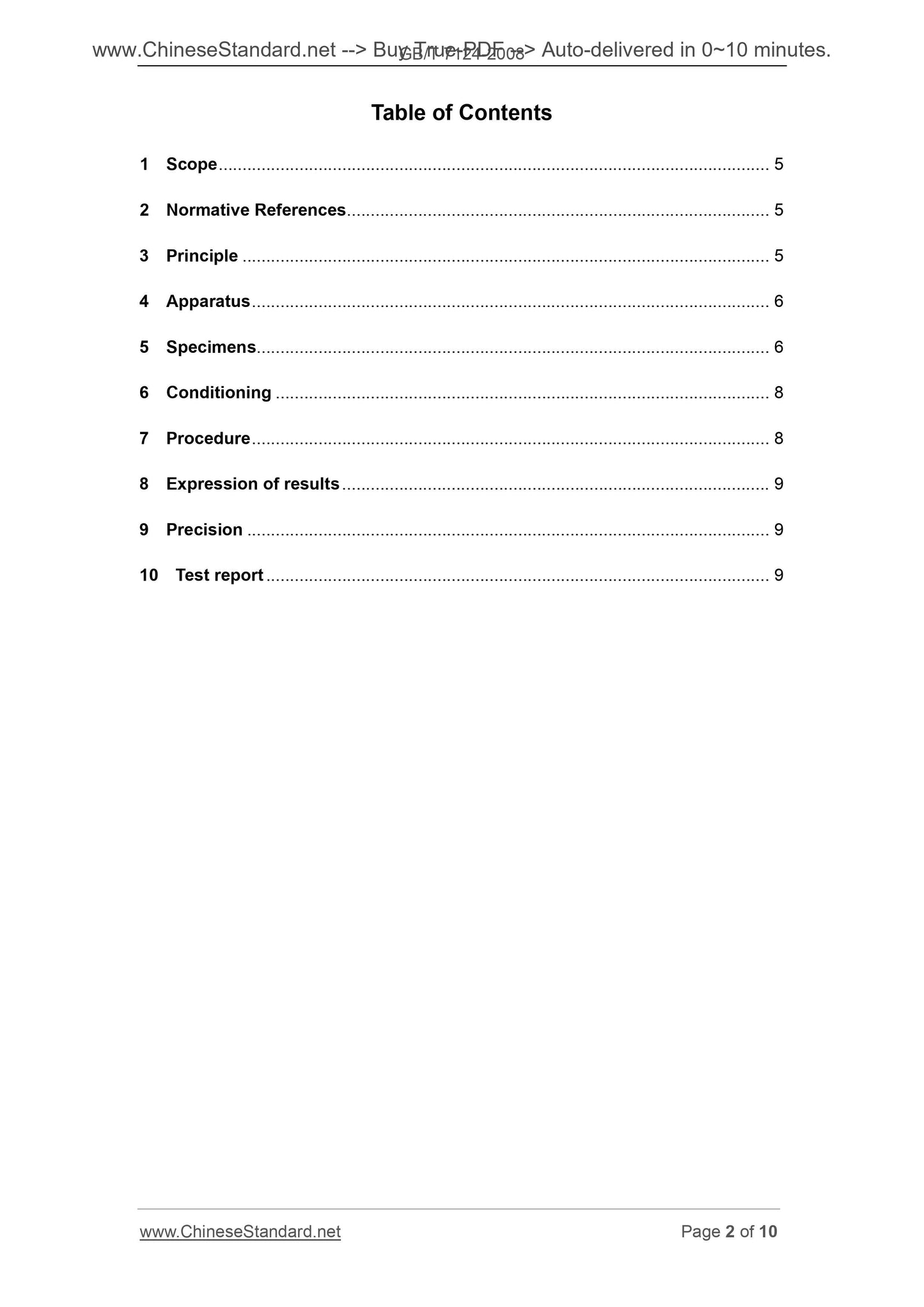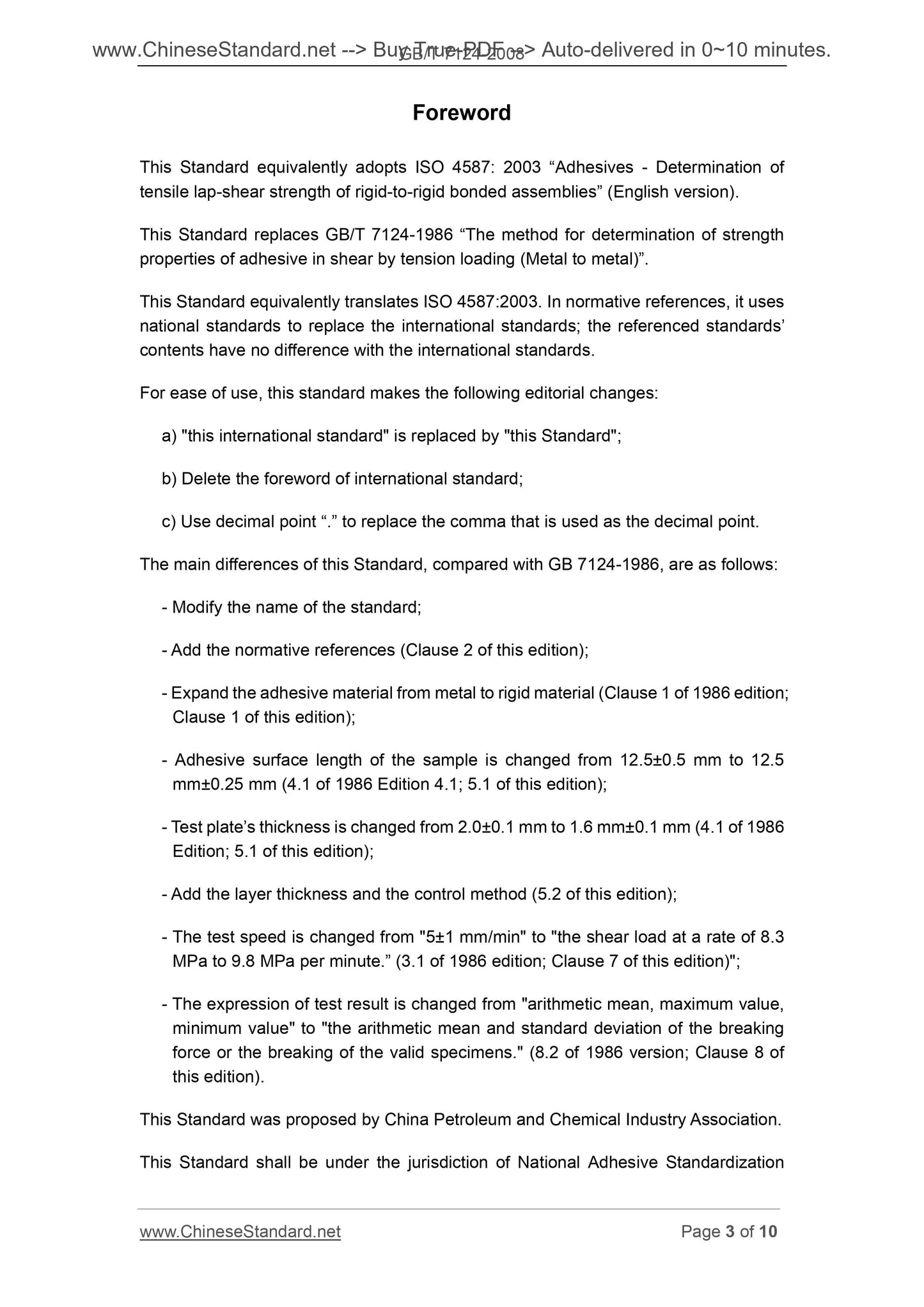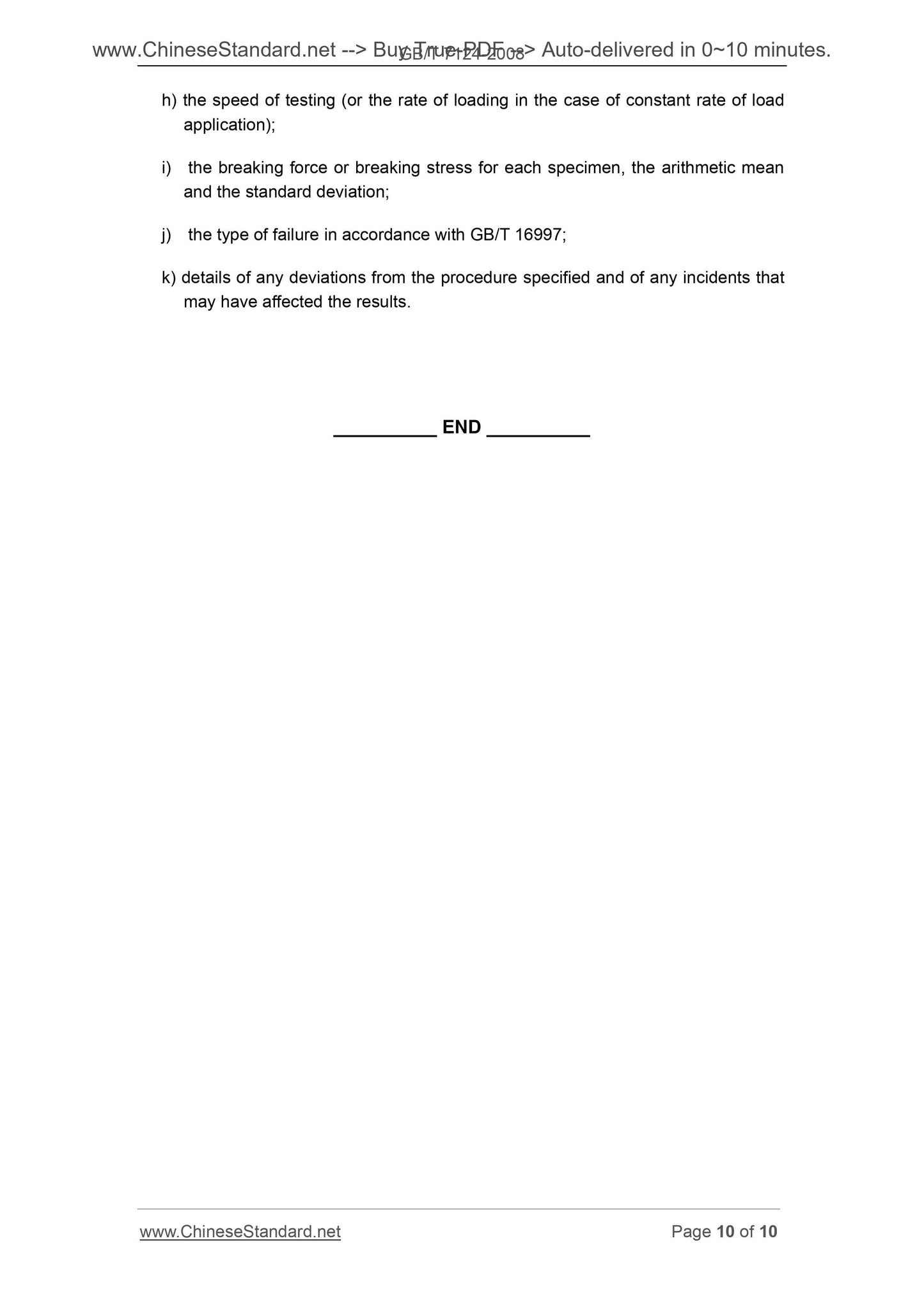1
/
of
6
www.ChineseStandard.us -- Field Test Asia Pte. Ltd.
GB/T 7124-2008 English PDF (GB/T7124-2008)
GB/T 7124-2008 English PDF (GB/T7124-2008)
Regular price
$70.00
Regular price
Sale price
$70.00
Unit price
/
per
Shipping calculated at checkout.
Couldn't load pickup availability
GB/T 7124-2008: Adhesives -- Determination of tensile lap-shear strength of rigid-to-rigid bonded assemblies
Delivery: 9 seconds. Download (and Email) true-PDF + Invoice.Get Quotation: Click GB/T 7124-2008 (Self-service in 1-minute)
Newer / historical versions: GB/T 7124-2008
Preview True-PDF
Scope
This Standard specifies a method for determining the tensile lap-shear strength of rigid-to-rigid bonded assemblies.
Basic Data
| Standard ID | GB/T 7124-2008 (GB/T7124-2008) |
| Description (Translated English) | Adhesives -- Determination of tensile lap-shear strength of rigid-to-rigid bonded assemblies |
| Sector / Industry | National Standard (Recommended) |
| Classification of Chinese Standard | G38 |
| Classification of International Standard | 83.180 |
| Word Count Estimation | 10,128 |
| Date of Issue | 2008-06-04 |
| Date of Implementation | 2008-12-01 |
| Older Standard (superseded by this standard) | GB/T 7124-1986 |
| Quoted Standard | GB/T 2918; GB/T 16997; ISO 527-1: 1993; ISO 17212 |
| Adopted Standard | ISO 4587-2003, IDT |
| Regulation (derived from) | National Standard Approval Announcement 2008 No.9 (Total No.122) |
| Issuing agency(ies) | General Administration of Quality Supervision, Inspection and Quarantine of the People's Republic of China, Standardization Administration of the People's Republic of China |
| Summary | This standard specifies the determination of rigid material glued pieces of rigid material tensile shear strength. This standard also specifies the sample preparation and testing conditions. The testing process is not as design data. |
Share











